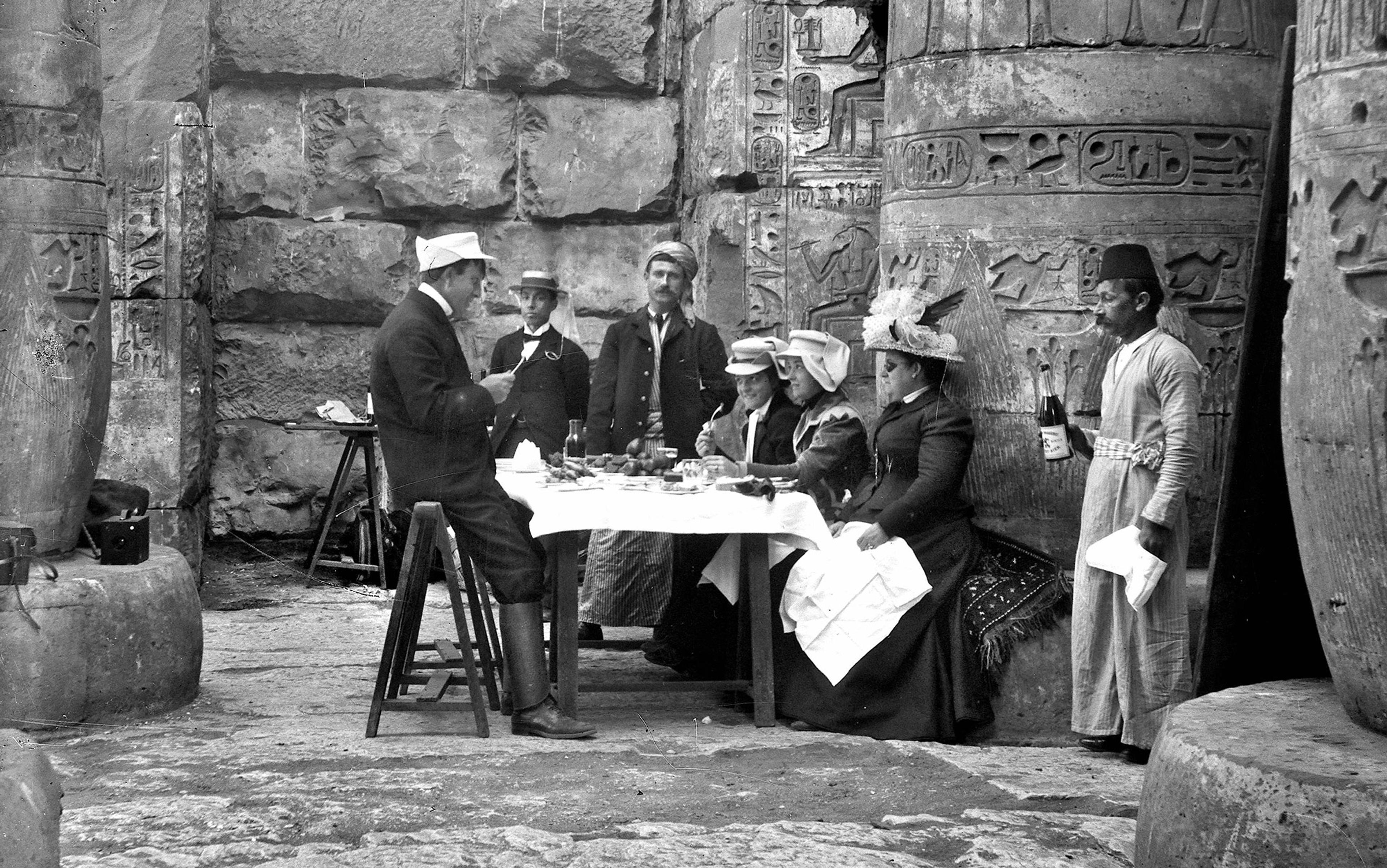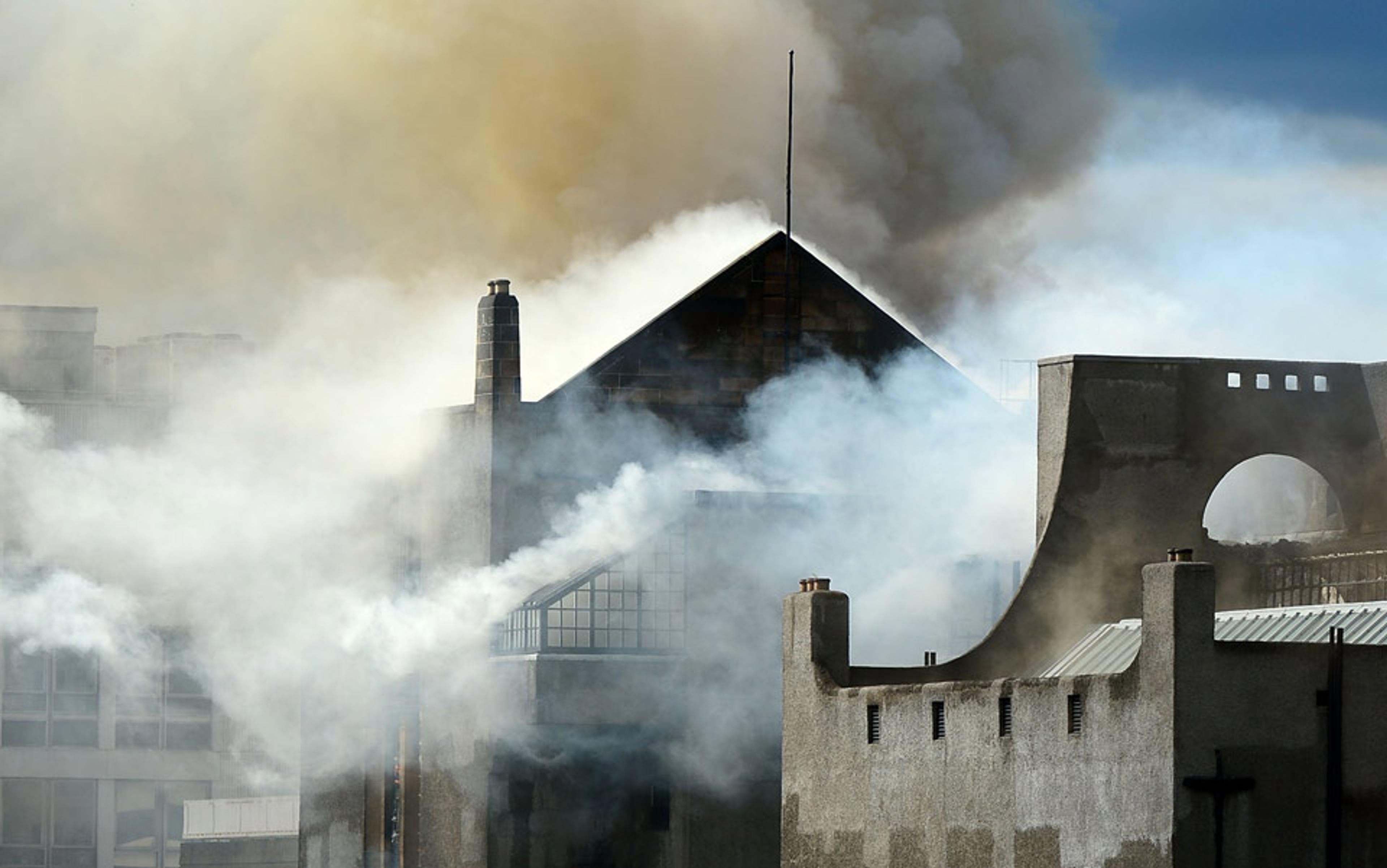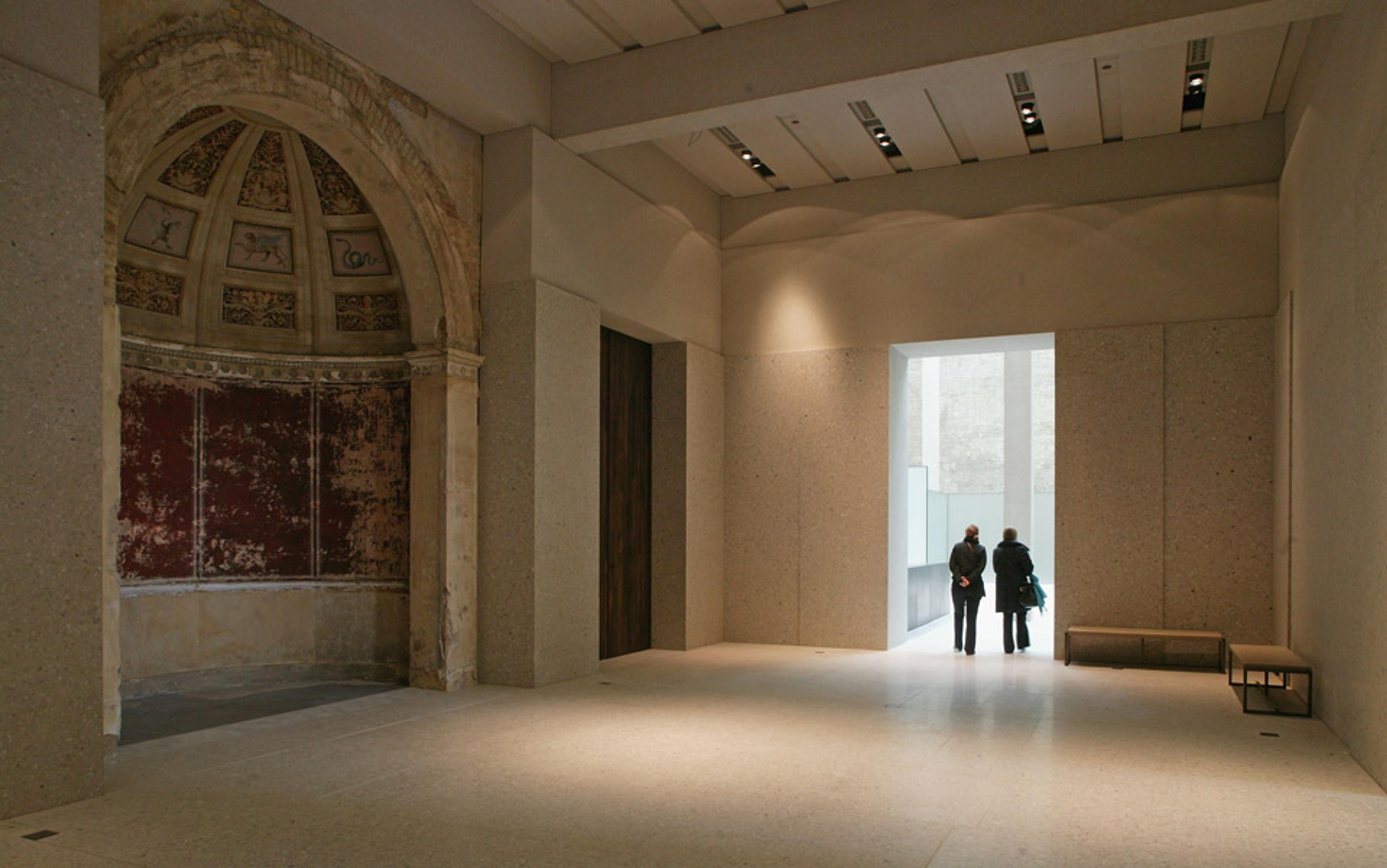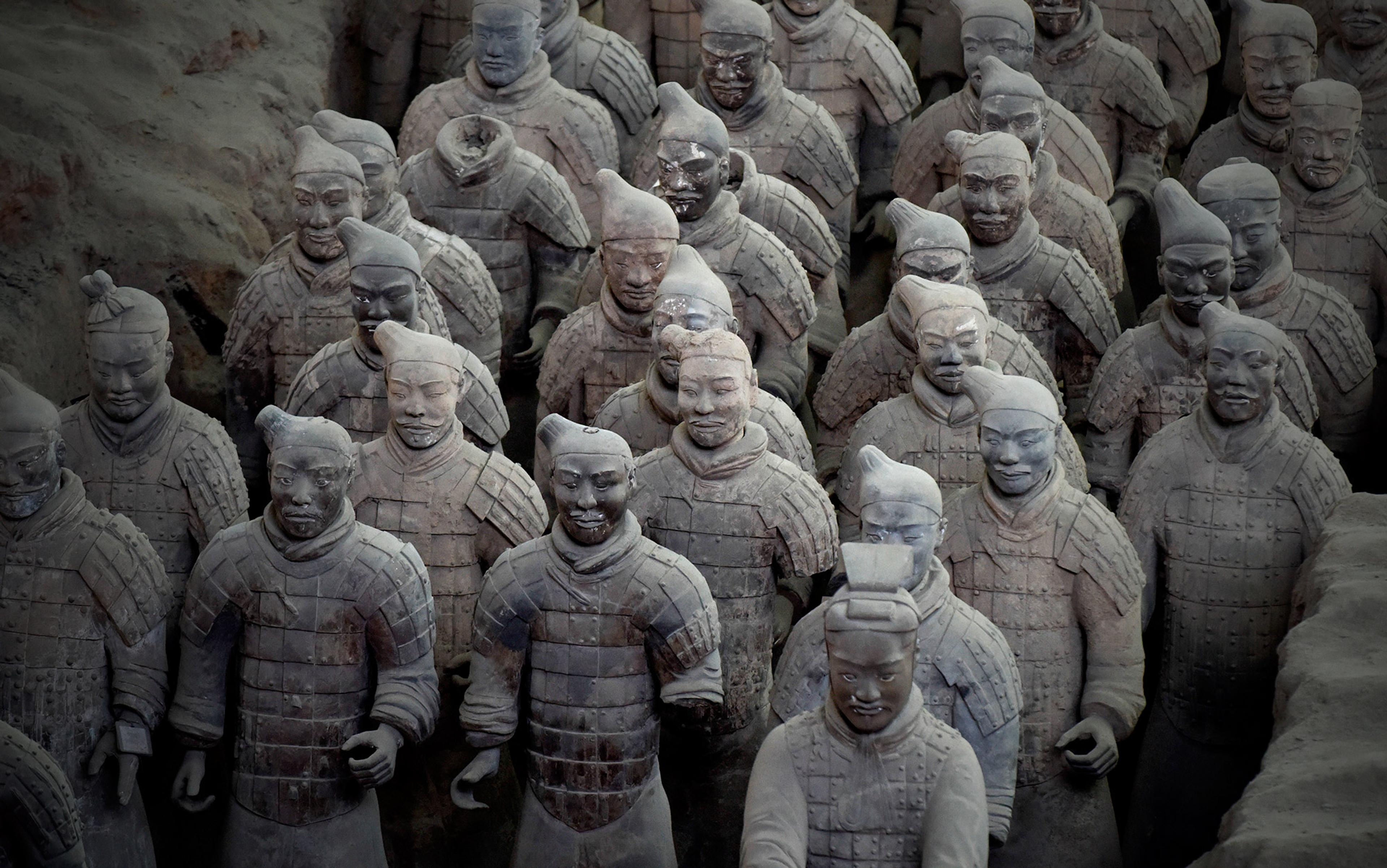By 1997, Moscow’s skyline was transformed when a vast golden dome, long absent, rose once again over the city. The Cathedral of Christ the Saviour had returned. The dome-topped structure now standing along the Moskva River is a near-exact replica of the original 19th-century cathedral built to commemorate Russia’s victory over Napoleon in 1812. The cathedral was destroyed by the Bolsheviks in 1931, then in 1958 it was replaced with a massive outdoor swimming pool, reusing the abandoned foundation of the Palace of the Soviets. My mother swam in this pool as a child in the early 1980s, basking in its steaming waters while snow fell around her and passersby. The absence of the cathedral above her was a testament to the Soviet state’s ‘ideological triumph’ over the past. Decades later, however, the pool was drained, the land consecrated once more, and the cathedral rebuilt, signalling changing times and ideologies. Today, walking past the cathedral, you’d be hard-pressed to find any mention of its former life as a swimming pool. Yet, as the Russian proverb goes, cвято место пусто не бывает – a sacred space is never empty.

The Cathedral of Christ the Saviour in the early 20th century, before demolition. Courtesy Wikimedia
So, is it the same cathedral? If not, what is it? And why does it matter?
The story of the Cathedral of Christ the Saviour is not unique. Across the world and throughout time, structures have been deliberately erased and later resurrected as replicas – often as a nod to new (or resurgent) political and ideological undercurrents. For example, Dresden’s Frauenkirche, obliterated in the firebombing of the Second World War, stood in ruins for half a century before being meticulously reconstructed. St Michael’s Golden-Domed Monastery in Kyiv was demolished by Soviet authorities in the 1930s but then rebuilt in the 1990s as an assertion of Ukrainian identity. Stari Most, the old bridge over the Neretva River in Bosnia and Herzegovina, was destroyed during the Yugoslav wars in the 1990s and rebuilt using stones from the original 16th-century Ottoman bridge as a symbol of multi-ethnic unity.
But at some point, the replica becomes the ‘original’. Take the 1893 World’s Columbian Exposition in Chicago. The fairgrounds were filled with architectural reproductions, including, as Amanda Reeser Lawrence writes in her book The Architecture of Influence: The Myth of Originality in the Twentieth Century (2023), ‘a full-scale replica of the convent where Christopher Columbus stayed before his first voyage to the New World’, along with mock streets from Cairo and Constantinople and national pavilions that presented curated versions of global cultures. These recreations deployed architectural fantasy and voyeurism in the service of ideologies that promoted only European cultures as ‘highbrow’, with everyone else as barbarian or backward. For American audiences who had never experienced the ‘original’ by visiting the countries represented, these pavilions became their primary frame of reference. In this sense, the replica was not just a stand-in or ‘official’ representation of a culture, but a definitive version that reinforced an exoticised perspective.

All images from Official views of the World’s Columbian Exposition (1893) by C D Arnold and H D Higinbotham. Courtesy Project Gutenberg



Reproductions, replicas and copies are not a modern phenomenon. Rather, the modern era has allowed for the production of replicas to accelerate in both their exactitude and the speed at which they’re built; it took 44 years to build the first Cathedral of Christ the Saviour, but only five to rebuild it. Architectural replicas raise fascinating questions about history, authenticity and national identity. Does rebuilding a monument succeed in reclaiming a lost heritage, or does it overwrite history to suit modern narratives? Or perhaps the act of rebuilding does a bit of both, because an artefact that claims continuity with the past but is a product of the present is not simply a replica; at some point, it just becomes real.
The tension inherent in how we understand architectural replicas can be tightened up by looking at two opposing schools of thought in preservation: ‘scrape’ and ‘anti-scrape’. These terms emerged in the late 19th century, coined by the Society for the Protection of Ancient Buildings in Britain – but they neatly encapsulate the philosophies of two influential figures, Eugène Emmanuel Viollet-le-Duc and John Ruskin.
Viollet-le-Duc was a French architect who advocated for a ‘scrape’ method of restoration, and whose restoration projects mostly included medieval French landmarks, including Notre-Dame de Paris. He believed that restoration meant more than repair, that it was a creative act, a process of projecting backwards in time to complete a building as its original architect would have intended it. ‘To restore a building,’ he wrote, ‘is not to preserve it, to repair it, or to rebuild it; it is to reinstate it in a condition of completeness that may never have existed at any given time.’ For him, architecture was a living system that could be improved through invention, as long as the restorer could experience the spirit of the original design. In this sense, restoration was forward-looking and visionary.
Yet this vision licensed Viollet-le-Duc to add elements that had never existed in the original structure, justifying them as expressions of the building’s architectural ‘truth’. He practised what is now called ‘stylistic cleaning’, stripping away later additions that he viewed as not ‘authentic’ to the Middle Ages, even if those layers had become part of the building’s historical narrative. Though his choices were grounded in research, including archival drawings and stylistic comparisons, they often reflected personal aesthetic judgment more than historical accuracy. Still, by stripping later additions, he imposed a singular vision on buildings that had evolved. His restorations overlooked the fact that buildings accumulate layers of use and meaning over time; they are palimpsests, not fixed ideals.
Ruskin sought to protect the ruin, while Viollet-le-Duc sought to revive it
Although Ruskin never directly criticised Viollet-le-Duc, the English writer and art critic advocated for an ‘anti-scrape’ approach, which he laid out in a book called The Seven Lamps of Architecture (1849). For Ruskin, restoration was not renewal – it was obliteration, ‘a lie from beginning to end,’ he wrote, ‘as impossible as to raise the dead.’ Ruskin was writing in the context of an industrialising England, whose obsession with mechanisation and machine labour as a replacement for craft he saw as indicative of society’s moral failure. Ruskin found his ideal expression of truth and beauty in Gothic architecture for what it revealed about labour and community – this style was not the work of a single genius, and it possessed a ‘sacredness’ of craft, even in its ‘grotesque’ form. For Ruskin, as David Spurr writes in Architecture and Modern Literature (2012), the Gothic embodied a sort of freedom that stood ‘in opposition to the authoritarian classicism of the ancien régime’. Ruskin understood that buildings were not authored by solitary geniuses but were the work of many hands across time, and it was ‘that deep sense of voicefulness … which we feel in walls that have long been washed by the passing waves of humanity’ that no replica or machine-made building could ever contain.
Ruskin’s approach has largely won out in the restoration projects of today, with his emphasis on minimal intervention, the reversibility of interventions, and the protection of historic fabric, which he argues we have no right to touch – ‘no right to obliterate’. It’s only what our generation has built that we are ‘at liberty to throw down’.
Ruskin and Viollet-le-Duc offered opposing visions of preservation: one sought to protect the ruin, the other to revive it. Yet neither could fully account for the dilemma that arises when a building is lost entirely, when there is nothing left to preserve or restore. What then? While ‘scrape’ and ‘anti-scrape’ debated how to treat surviving structures, replicas emerge when the original is gone, forcing a new question: is replication Viollet-le-Duc’s inventive restoration taken to its extreme, or a betrayal of Ruskin’s reverence for historical patina? It is in this vacuum that the replica comes into its own – not as an act of repair or conservation, but as something stranger and stronger, something ‘hyperreal’. This is the paradox of the replica: it exists only because the original is gone, yet it can never truly replace it. It claims to preserve memory, but does so through reinvention, blurring the line between authenticity and artifice.
Amanda Reeser Lawrence helps to frame this tension. A replica, she writes, is ‘a reply to an original’, a folding back rather than a deviation. Replication, like restoration, involves interpretation, choices about materials, styles, eras; and so a ‘replica is never the same thing as that which it replicates, but it is also never completely separate from it.’ Inevitably, something is lost in the ‘interpretation’ of the replica. But if the replica is not the original, nor is it entirely separate. It exists as an echo, a type of architectural quotation.
Lawrence cites James Marston Fitch, the American architect and preservationist, who called replication ‘the most radical and hazardous’ of all interventions, since replicas risk dulling the public’s appreciation of the original. The goal of preservation, in his view, was to protect the authentic or ‘prototypical’, not to fabricate its likeness. Replicas, by contrast, risk becoming palatable stand-ins: too clean, too complete, and too reassuring. But others offer a relevant diatribe, like the architectural critic Ada Louise Huxtable writing in The Unreal America (1997) about a ‘public increasingly addicted to fakes and fantasies’ and a culture obsessed with ‘“trophy” buildings by “signature” architects, like designer clothes.’ Though Las Vegas is a frequent example, Huxtable’s critique is broader: she targets a cultural landscape where architectural authenticity is replaced by spectacle, simulation and branding: a kind of ‘Disneyfication’ of buildings. She argues that reality is shrinking, and along with it, the type of architecture that defines our feeling of societal self. Like Ruskin, Huxtable believes that ‘every age produces its greatest buildings in its own image’ and that ‘contemporary design must be rooted in, and cannot avoid, the conditions and references of its own time.’ In our own era, this suggests that architecture should confront, rather than escape, the complexities of the present – social, political, technological – instead of retreating into nostalgic simulations or sanitised replicas.
A replica offers continuity where there is rupture, and certainty where there is loss
There are good fakes (‘real fakes’) and bad fakes (‘fake fakes’), according to Huxtable’s categories, with the former considered better because they improve on reality. Take the concrete Parthenon art museum in Nashville, US, which positions itself as a faithful replica, versus the hotel Luxor Las Vegas, which flaunts its artificiality. Built of plastic, glass and steel, the Luxor makes no attempt to mimic ancient Egyptian construction yet, in its unabashed spectacle, it becomes a ‘real version’ of the fantasy it invokes. In this way, Huxtable’s ‘real fakes’ align with Viollet-le-Duc’s philosophy of restoration as creative reinterpretation, while ‘fake fakes’ abandon even the pretence of fidelity. They might seem to echo Ruskin’s disdain for dishonest reconstruction but both approaches can obscure the very traces of history that preservation aims to protect. This is the quiet deception we must confront: when we embrace these altered realities, we risk accepting a version of the past that erases its wounds.

The Parthenon art museum in Centennial Park, Nashville, Tennessee. Photo courtesy Wikipedia
Replicas provide an illusion of continuity – as Huxtable says, they betray no ‘hallmarks of time and place … the worn stone, the chafed corner, the threshold low and uneven from many feet’. The absence of imperfections is of course something that the rebuilt Cathedral of Christ the Saviour, the Frauenkirche in Dresden and St Michael’s Monastery all share – and which they also share with ‘low-brow’ fakery such as mock-Tudor housing or theme-park replicas, where what is being sold and consumed is the idea of authenticity, not the lived reality of time’s passage. Imperfections mark a structure’s passage through time; it is dangerous to present the replica as ‘original’ or never broken, as if history has been restored, or re-corrected itself in some way. This, then, is where preservation and replication collide. Neither Ruskin’s reverence for patina nor Viollet-le-Duc’s inventive spirit fully accounts for the replica’s uncanny power. A replica does not preserve, in the traditional sense, nor simply restore. Rather it performs, convinces, comforts. It offers continuity where there is rupture, and certainty where there is loss. But, in so doing, it also risks smoothing over the very fractures that preservation seeks to remember: the flaws, gaps and scars that history leaves behind.
Intrinsic to all buildings are ideologies – the ones that built them and the ones that keep them alive. In this sense, rebuilding or replicating is never a neutral act. Political and ideological valence is everywhere, behind each material and each stylistic choice, ranging from expressions of political solidarity to symbols of continuity, nostalgia or even enforced stasis: the affirmation of existing hierarchies and national myths. So when, in this sense, does the replica become ‘real’? When does commemoration become propaganda? And when does the honouring of memory turn into a curated fantasy? Ruskin’s anti-scrape reverence for decay, Viollet-le-Duc’s imaginative restoration and Huxtable’s recognition of a changing, improved reality offer us useful lenses for looking at the acts of restoration and reproduction, but none account for the surge of replicas we see today.
There has been a rise, notably in China, in what might be called ‘fantasy replication’– from Thames Town outside Shanghai, which replicates the architecture of an English market town, to the replica of the White House in Jiangsu province or the duplicate of Le Corbusier’s Ronchamp Chapel in Zhengzhou (partly demolished after the Le Corbusier Foundation intervened, and now housing a barbeque restaurant in its ruins). So widespread has this trend become that China has banned copycat architecture, citing fears of cultural degradation and promising to ‘strengthen cultural confidence, show a city’s features, exhibit the contemporary spirit, and display the Chinese characteristics.’ The ban is revealing because it acknowledges that replicas are not harmless – they shape identity, erode distinctiveness and blur national narratives.

Thames Town near Shanghai. Courtesy Wikipedia
Yet, in places like Gaza and Ukraine, where entire urban fabrics are being obliterated, we stand on the edge of a reconstruction effort of unprecedented scale. As of 2025, only 140,000 buildings are still standing across the Gaza Strip, or just 40 per cent of the total number of buildings that existed before Israel’s war on Hamas. In Ukraine, nearly 500 heritage sites have been damaged in concerted attacks on Ukraine’s artistic and cultural heritage, including museums, archives and libraries.
The question of how to honour lost or damaged heritage without erasing the past remains a contested issue
Preservation theory has always wrestled with rebuilding. Article 12 of the Venice Charter of the International Council on Monuments and Sites (1964) states that ‘replacements of missing parts must integrate harmoniously with the whole but at the same time be distinguishable from the original so that restoration does not falsify the historic or artistic evidence.’ Those engaged in rebuilding should not strive for stylistic unity but instead respect the contributions of all historical periods; rather than recreating an idealised past, preservation became a process of acknowledging layered histories. Later, the Nara Document on Authenticity (1994) – drafted during the Nara Conference in Japan – expanded the definition of authenticity beyond material fabric to include intangible values such as use, tradition and cultural context, dimensions that are especially vital in non-Western and postcolonial contexts. It emphasised that authenticity must be understood in relation to the cultural context in which heritage is situated, opening the door for reconstructions that uphold a community’s identity even if the original material is lost.
Building on these ideas, the Riga Charter (2000) – emerging from post-Soviet concerns about rebuilding destroyed sites – did not support reconstruction at all, with the exception of ‘circumstances where reconstruction is necessary for the survival of the place … in response to tragic loss’, with the added stipulation that ‘any reconstruction [must be] legible, reversible’. While both the Nara Document and the Riga Charter urge sensitivity, even caution, on reconstruction efforts, the question of how to honour lost or damaged heritage without erasing the past remains a complex and contested issue. Ultimately, the challenge lies in finding a path that respects both the material and immaterial dimensions of heritage, acknowledging the scars of history while shaping a future that reflects the community’s evolving identity.
In post-conflict zones, reconstruction is not simply a technical or aesthetic act; it is a political one as well. To rebuild a monument is to make a statement about identity and continuity, and the values that a society wants to carry forward. The decision to replicate – to bring back what was – often masks a deeper desire for stability, even a return to a perceived golden age that is unmarred by rupture or loss. But preservation theory reminds us that absence also has meaning. Loss leaves a scar, and scars are part of history, too. To choose replication as a balm, as an attempt to restore normality by restoring the image of what was, can dull the sharp edge of memory. It risks prioritising appearance over understanding. Nostalgia over critique.
Rebuilding should not be seen as an affront to authenticity, but neither should it be mistaken for a simple return. If done with care and critical awareness, reconstruction can be more than a performance of resilience – it can become a site of reckoning. It can acknowledge what has been destroyed without pretending that destruction leaves no trace. In this spirit, the American architect Lebbeus Woods argued that post-conflict architecture should offer ‘a new reality’, rather than strive to erase the trauma. His proposals for Sarajevo – sharp, angular insertions into ruined walls – made no attempt to blend in. They revealed the wound, then built alongside it. This is repair as confrontation, a refusal to let architecture forget.
The original Cathedral of Christ the Saviour took nearly 50 years to build. Its replica rose in only five. The speed is seductive, a symbol of triumph and efficiency, but it comes at a cost. We are not inventing anything new, we are just copying – and not in a way that shows we’ve learned from our mistakes, but in a way that pretends they never happened. My mother no longer swims in the cathedral’s shadow. The pool is gone. The past has been rewritten in concrete and gold, traded for the illusion of permanence. But the replica’s message is clear: the future will not only remember, it will curate memory. It will decide what is sacred and what is inconvenient, what to exalt and what to bury. In that way, replicas are not restorations of the past. They are tools for authoring the future.






